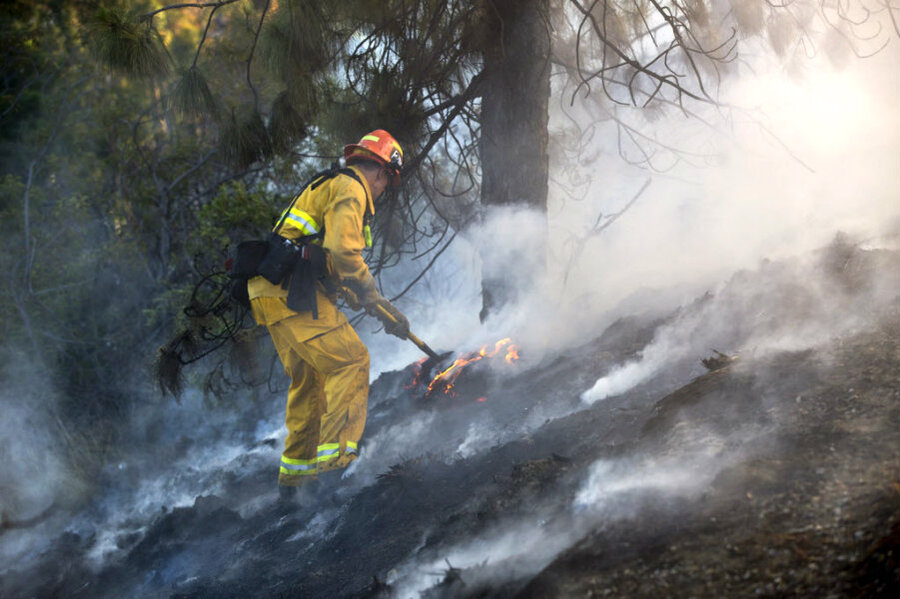Second firefighter dies battling California blazes. How risky is wildfire duty?
A US Forest Service firefighter died Saturday night while battling a wildfire in California’s Lake Tahoe area – the second firefighter killed in the state since the start of the summer wildfire season.
Michael Hallenbeck of Shingle Springs, Calif., was struck by a tree during the initial attack on a fire that broke out south of the Echo Summit mountain pass in El Dorado County, the agency said in a statement Sunday.
The news comes less than two weeks after US Forest Service firefighter David Ruhl of Rapid City, S.D., was killed by a wildfire in the Modoc National Forest while he scouted the area for ways to fight the blaze. The two incidents highlight the dangers firefighters face in the line of duty, as the western United States struggles with one of its most damaging fire seasons for the past 10 years.
“The grief we are feeling at the sudden loss of two of our firefighters ... reminds us of the sacrifices these men and women make every day,” said Randy Moore, the agency's Pacific Southwest regional forester, in a statement on Sunday. “The loss of any member of our Forest Service family is a tragedy.”
Between 2000 and 2013, nearly 300 firefighters died trying to put out wildfires, according to the Centers for Disease Control and Prevention. Common hazards faced on the fire line range from heat-related illnesses, smoke inhalation, and entrapment to vehicle-related injuries and slips, trips, and falls, the CDC reported.
“The amount of preparation that goes into organizing and deploying strike teams is equivalent to fighting a war,” San Mateo fire captain Matt Turturici, who has been fighting wildfires for 24 years, told Time magazine. “The wall of flames can reach 20 to 150 ft. depending on what’s burning and move very quickly. When the fire’s moving, it can sound like a freight train.”
And the job has become more dangerous in the last decade. As the Monitor’s Daniel Wood reported:
People who study forest fires say that the past 10 years have brought increasingly frequent blazes that burn 500,000 acres or more – 10 times the size of ones 20 years ago.
Several factors have contributed to this trend. One is climate change, which has been marked by a small but significant increase in the average yearly temperature across the West. Second is a fire season that is now nearly year-round. Third is the encroachment of homes into wooded areas. This has coincided with a rise in hiking, cycling, and other recreational use of wilderness areas.
This summer, more than 10,000 firefighters have been dispatched to fight 20 wildfires burning across drought-stricken California. The state’s largest wildfire was burning in Lake, Yolo, and Colusa counties, and has prompted the evacuations of hundreds of residents and destroyed 43 residences, 53 outbuildings, and eight other structures.
The fire, which has charred nearly 109 square miles since igniting July 29, was 85 percent contained Sunday, the state Department of Forestry and Fire Protection said.
This report contains material from the Associated Press.






